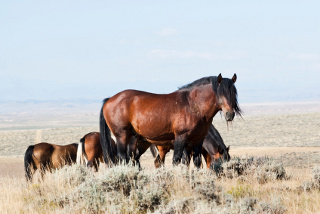
This article is somewhat similar to one of our previously published articles called What Does Non-Traditional Really Mean? It’s “outside the norm“… depending on what “the norm” means to you.
Putting a natural horse care program in place when first starting out can be a challenging task. Like most industries, everyone has an opinion. I have come to find that the horse industry can be pretty extreme when it comes to most any topic. The “extreme” aspect usually resides on both sides of the spectrum.
Not often do you find opinions that advocate “balance” versus extremism.
Meaning, most anything, no matter how good it is can be placed into the wrong hands where it is improperly used. You see, news is not about something being great. It is usually about something being wrong and destructive.
This is where I feel natural horse care and most anything that surrounds it gets the bad end of the deal in many circumstances.
Over the years I have thought long and hard about why so many people have different experiences, both good and bad, when it comes to natural horse care. My conclusion is that these experiences result in everyone forming their opinions about what works and what doesn’t.
For example,
- Barefoot versus metal shoes
- Use of processed feeds, etc. versus whole food form approaches to diet
- Competently using herbal blends versus not using herbs at all
- Bitless versus using a bit
- Treeless saddles versus a treed saddle
- Natural boarding versus stalled horses
- Natural horse-man-ship versus traditional training methods
I could go on and on with this list.
It is no wonder people are so confused, especially when most studies contradict each other and many of them are completely worthless for various reasons.
Who do you believe?
I’ve asked myself this question for years and the only answer I have come up with is…
“THE HORSE”.
A quote I love that speaks so much truth is a statement I keep in mind ALWAYS with my own horses and other people’s horses in my care. This quote should be remembered by both professionals and everyday horse owners who seek out truth and optimal health for their equine partners.
The trick is not in knowing what to do, rather in knowing when to do it. Everything works sometimes, but nothing works every time.
If something fails on even ONE horse, then it must be considered a tool, not a rule! ~ Cindy Sullivan, Tribe Equus
Horses are nature in their finest form, however, man has done a great job of domesticating them and degrading the “natural” side of the equation. We’re great at messing things up and not realizing it. This can cause pain, suffering and illness.
However, there are those who continue to seek answers for their horse. Those are the few individuals who are hopefully not swayed by every popular theory that pops up in the industry.
No one can make you or your horse healthy. With the state of both the human health care industry and the veterinarian care that is available, I believe everyone would be better off by taking charge of their own health and the health of their animal companions.
Knowledge is power, however, beware of who you obtain your knowledge from.
My personal opinion is that even if a billion people believe something it can still be ridiculous!
I personally do not take anything that someone says at face value no matter who says it and no matter how much success they claim. What I have learned over the years is that you must obtain knowledge and take responsibility so you can make informed decisions.
Each horse is an individual. You must learn to listen to each horse AS an individual.
The statement I made in my article Natural Hoof Care For A Healthy Hoof – Hoof Form Samples was there IS more than one “wild horse model”. Something that may help you on your journey of obtaining knowledge is that if it doesn’t line up with a wild horse model, then it is not truth.
One place you can start is by learning more about different wild horse models. I believe having that knowledge alone will help you to make more informed decisions. Most of what you learn will make sense, but learn to listen to the horse – each individual AS an individual.
It is important to note that when applying this concept you must apply it with the understanding of listening to what the horse is asking for in that moment in time. What works today may not work the same tomorrow on the same horse.
That statement alone could indicate why there is so much controversy and confusion about different approaches.
Basically, if you want a step by step method that always works, there isn’t one!
You must adjust to fit the situation. ~Ray Hunt
Summary
I realize this article didn’t give you any hard and fast rules to follow. That was not the intent. The intent was to express to you my beliefs about the subject of “Who Do You Believe”. I’m not going to TELL you who or what to believe. You have to figure that one out for yourself… it’s not an easy journey, but it’s an interesting one.
Please share your thoughts with me on the subject of “Who Do You Believe?” in the comments section or feel free to send me a private email through our contact page.
What I have expressed in this article is not isolated to the horse industry. What have been your frustrations surrounding obtaining more knowledge about a subject you are passionate about?
Keep it soulful,
Stephanie Krahl
